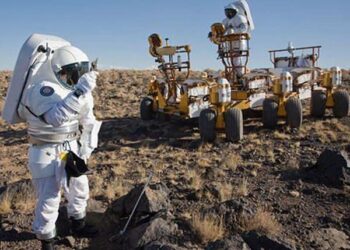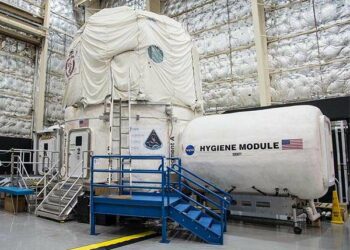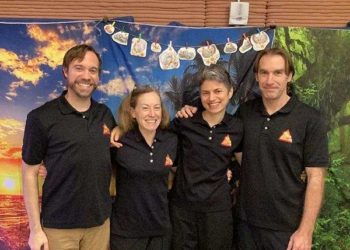What Is Space Tourism?
Some find it difficult to imagine what would happen if they get a chance to travel in space. Other people’s imagination is far more vivid, and they frequently dream of having the opportunity to leave Mother Earth.
Dreamers, you’re not alone, and your dreams may come true. A trendy niche of the aviation industry has sparked many investors’ attention. It’s called space tourism, and its goal is to provide tourists with space travel opportunities. The tourists could travel for various purposes, such as taking a vacation, exploring new places, or traveling for business.
The cost for such a trip is prohibitive; however, some would be lucky enough to say goodbye to the comfort of their home and go on a much-deserved vacation.
If you were to explore space, you could choose between these four options: atmospheric zero-gravity flights, longer duration orbital trips into space, short-duration suborbital flights, and high altitude jet fighter flights.
Exploring Life on Mars or Flying to the Moon?
Colonizing Mars and terraforming its surface seems like it’s on everyone’s mind lately. More and more scientists and engineers try to find ways to send people to the planet closest to our home in the upcoming years. Whether that happens in the near future or not, there are some things you need to consider. Some might even advise you that visiting a lunar body might be better for several reasons.
Due to the water shortage, low gravity, and inhospitable surface, buying a “ticket” to the Moon might seem like a better option when it becomes available. NASA’s “Perseverance” rover sent initial data about Mars; however, both scientists and astronauts have yet to discover the inhospitable planet. Only then can Mr. Musk pride himself on selling the “cheapest” tickets that will take you to the Red Planet.
So, why is the Moon a better fit for you? Let’s just say that former Hilton Hotels’ president Barron Hilton wished to build a hotel on the Moon. His never accomplished goal was to have tourists in his hotel who’d sip on martinis and gaze at the stars. (Tasci) Who wouldn’t be fascinated by such a view?
Colonizing Earth’s natural satellite isn’t new to private space companies. The concept became popular after the discovery of water in the soil at the lunar poles. The discovery might ease up the process of sending tourists to the Moon, as water won’t be a problem. Unlike the Moon, Mars still poses a considerable risk to potential tourists as there is a water shortage on the planet.
Due to the negative implications of the term “colonizing,” some prefer to use the words “space settlement” when talking about populating the Moon. Yet, many people use this term when talking about settling down on Mars. Some don’t mind the uncertainties that the planet poses, and they are ready to investigate the unknown.
Continue reading to decide which destination will satisfy your needs if you’re granted the possibility of leaving Earth.
Lunar Tourism
Before we look at the advantages and drawbacks of sending tourists on the Moon, let’s see the companies that would like to make the trip happen.
Space Adventurers
Founded in 1998, the American space tourism company offers spaceflight-related services, including cosmonaut training. The company prides itself on sending a couple of clients in space.
Space Adventureres’ next mission is to organize a future lunar trip that encompasses traveling to the Moon. The travel would happen on a circumlunar trajectory. The plan was first announced in 2007 when the company offered a ticket of $100 million per seat.
The whole trip would last for nine days in total, out of which the tourists would spend 45 minutes on Moon gazing. Only two seats were offered, while one is already bought.
SpaceX
The CEO of SpaceX, Elon Musk, announced inviting two individuals to go on a Moon loop flight using a free return trajectory. Musk laid out the plan in late 2018, and the trip should happen by 2023.
Musk didn’t keep a secret that the passenger for the trip is Yusaku Maezawa, who’d invite 6-8 artists to create new art during the journey.
- Advantages
Should lunar tourism happen soon, some individuals would experience things that they never thought would happen in their everyday lives.
Some of the natural attractions available for tourists are the view of our natural satellite’s far side and the Earth’s view rising and setting against the lunar horizon.
If people were to colonize Moon and not just briefly visit it, some of the long-term benefits would include human health due to the lower gravity than on Mars. Water won’t be a problem, and the eight hours of sunlight could be beneficial for farming crops.
- Drawbacks
Launching a program that would take us on the Moon comes with a price that won’t be affordable for the working class. The “cheap” tickets that Musk promotes are far from cheap, and not everyone could afford such a luxury.
Another disadvantage is the long nights on the Moon due to the eight hours of sunlight. The “peaks of external light” would be the ideal place where hotels can be built. The sites on the far side of the Moon are constantly bathed in sunlight.
The technology is far from ideal, and it would take us a long time to improve it. Even though plans have been made and tickets have been offered, scientists and engineers have yet to develop the vehicles that would take us on the Moon.
Tourism on Mars
Space exploration and tourism, as concepts, grow in popularity all the time. First, many government and private companies were interested in sending tourists to Venus. When they realized that Venus might be hostile, their focus shifted on populating Mars.
The plan of terraforming and then colonizing Mars isn’t new to the public eye. The human missions to Mars began in the 20th century, and some are serious about making the trip happen.
The national governmental space programs don’t have the intention to be direct precursors to colonization. Their programs focus on being exploration missions. NASA, ESA, and Roscosmos want to send people on the Red Planet to explore the unknown; however, their main goal isn’t to set up a permanent base.
On the other hand, SpaceX set up a program that enables humans to terraform the planet and eventually colonize it. Elon Musk’s goal is to land the first humans on Mars by 2026.
In the previous article, we focused on why Mars might not be a hospitable environment. However, if you decide to purchase a ticket, learn more about the sites that’ll take your breath away.
Becquerel Crater
The crater is named after Antoine H. Becquerel. It is 167 km long in diameter, and the hole is filled with sedimentary rocks made of sulfate. The rocks are similar to the ones on our planet and formed after water evaporation. Due to this discovery, scientists believe that the crater was a vast lake a long time ago.
The North Pole
If your dream destination is Mars, don’t forget to visit the North Pole, also known as Planum Boreum. The ice cap is covered with water ice. The Planum Boreum is a canyon that is deeper than the Grand Canyon.
Iani Chaos
Before heading back home, don’t forget to stop and see Iani Chaos, a region at the south end of Ares Vallis. The chaotic terrain might have formed from the removal of water or ice. Due to this even, flooding at the surface occurred, and that’s how Iani Chaos developed.
Olympus Mons
Your trip won’t be complete without visiting Olympus Mons. It’s a massive shield volcano about two and a half times the height of Mount Everest above sea level. Olympus Mons is one of the largest volcanos in the Solar System.
Conclusion
Whether it is a Moon-gazing trip or a visit to the North Pole on Mars, space tourism got the hype it deserved. The concept of exploring space isn’t new, and it seems that it’s here to stay, at least until humans see for themselves the beauty of our Solar System.
Before you decide where to go first, think thoroughly about each destination’s pros and cons. Some don’t mind the shorter daylight, while others don’t mind the cold on the Red Planet. Mars and the Moon are places that should be visited once in our lifetime, provided that we’re allowed to do it. The tickets’ price for both destinations seems to vary depending on the private company that organizes the trip.
Whether we’ll still be alive to explore space or not, one thing is sure. In the words of the great Carl Sagan, “Somewhere, something incredible is waiting to be known.”




















